‘A small, black, repulsive picture’ is not how most people today would describe Zurbaran’s haunting painting of ‘Saint Francis in Meditation’ (1635-9) in the National Gallery. But that was how one Protestant critic of its acquisition in 1853 described this image of an Italian saint satirised three centuries earlier by the German Lutheran cleric Erasmus Alber in his Koran of the Franciscans.
Alber chose his title advisedly, for one of this peacemaking saint’s legendary acts of diplomacy was initiating an interfaith dialogue with the Muslim Sultan of Egypt, al-Malik al-Kamil. In 1219, so the story goes, Francis crossed to Damietta, then under siege by troops of the Fifth Crusade, slipped unarmed into the city and was arrested and brought before the Sultan. Received with courtesy, he began preaching the Gospel but seeing that his arguments were getting nowhere he proposed a trial by fire with the local imams.
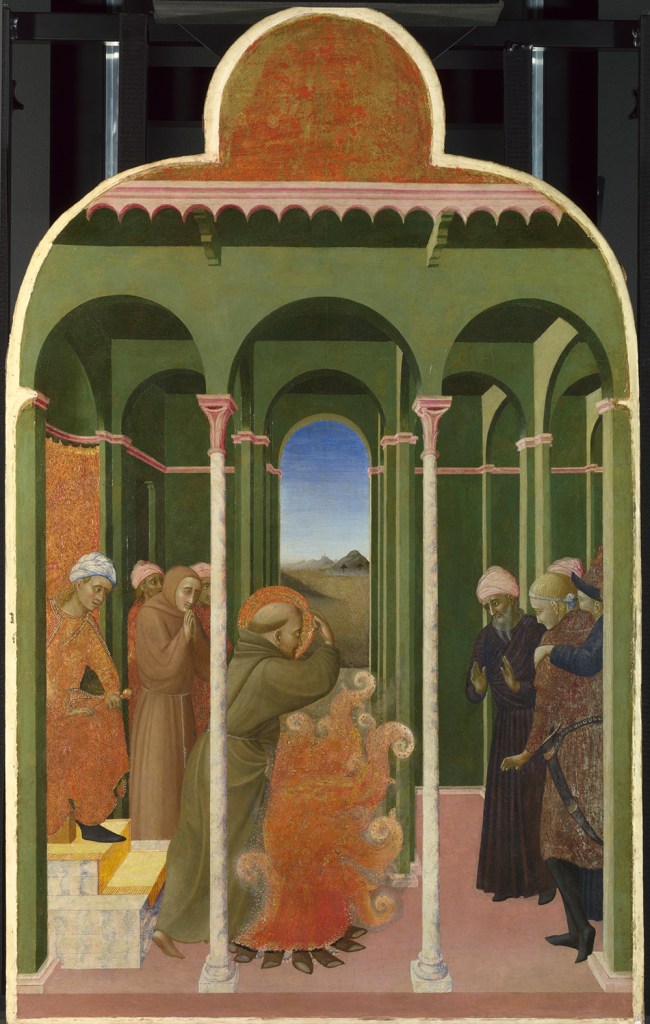
The man hailed by D’Annunzio as ‘the most Italian of saints’ appeals across national and religious boundaries
The Sultan, afraid of the outcome, is said to have refused, but in his Borgo San Sepolcro altarpiece the 15th-century Sienese artist Sassetta shows Francis boldly stepping into the flames. Sassetta’s vivid narrative cycle of the life of Francis is another highlight of the national collection, and together with Zurbaran’s painting and Botticelli’s ‘Saint Francis of Assisi with Angels’ (c.1475-80) it sparked the idea of mounting an exhibition devoted to the saint. Co-curated by the gallery’s Catholic half-Italian director Gabriele Finaldi, the show will have Erasmus Alber spinning in his grave, but Finaldi has faith that the man hailed by D’Annunzio as ‘the most Italian of saints’ and by Mussolini as ‘the most saintly of Italians’ appeals across national and religious boundaries.
Francis has proven pulling power. In 1216, he persuaded Pope Honorius III to grant a plenary indulgence – normally reserved for such holy sites as Rome and Jerusalem – to pilgrims to the humble chapel at Portiuncula outside Assisi where he received his calling. Ever since, people have flocked to Umbria from all over the world to visit this miniature motherhouse of the Franciscans, along with the ‘sacred hovel’ at Rivotorto where he first found shelter, the cliffs at La Verna where he received the stigmata, the grottos of Mount Subasio where he went to pray and the vast double-decker basilica in his native Assisi whose foundation stone was laid by Pope Gregory IX the day after his canonisation in 1228, a mere two years after his death.
What is it about Francis? Hermit, church restorer, leper hugger, conflict resolver, nature lover, pioneer of the Nativity play, poet, social revolutionary – ‘the world’s one quite sincere democrat’ thought G.K. Chesterton – he’s a saint for all seasons. The contradictions in his character only make him more accessible. You like your saints austere and self-denying? Francis is for you. You like them singing and dancing? He’s your man. The brattish rich kid who became a champion of the underdog was even consecrated as a Marvel Comic hero in Francis, Brother of the Universe in 1980. His current incarnation is as an environmentalist: preacher to the birds, pact-maker with wolves and author of that great hymn to nature, ‘The Canticle of the Sun’, the first poem in vernacular Italian, whose refrain, ‘Laudato si’, was chosen by the present Pope Francis – the first to take his name – as the title of his 2015 encyclical on the environment.
Francis wasn’t the first celebrity saint – that title belongs to Thomas Becket – but he was the first after Christ to start a movement that spread like wildfire, attracting 5,000 friars in 12 years and inspiring endless hagiographies. The first, by Thomas of Celano, appeared the year after his canonisation. But the most popular publication, never out of print, is The Little Flowers of St Francis, compiled anonymously a century after his death in a charmingly naive style that, one suspects, inspired Giovanni Guareschi’s Don Camillo stories, with their speaking crucifix echoing the San Damiano Cross of Franciscan legend.
The original Romanesque rood cross from the church of San Damiano that instructed Francis to ‘go rebuild my house’ is far too precious to leave Assisi, but the exhibition features other treasured relics from the Sacro Convento, among them an early copy of a letter inscribed with a doodle by Francis of a tau cross emerging from a man’s head, and a horn said to have been a gift of the Sultan. There is also a much-patched Franciscan habit on loan from Santa Croce, more believable as the former property of the ascetic saint than the XXL size article on display in the Sacro Convento, which would have swamped Friar Tuck.
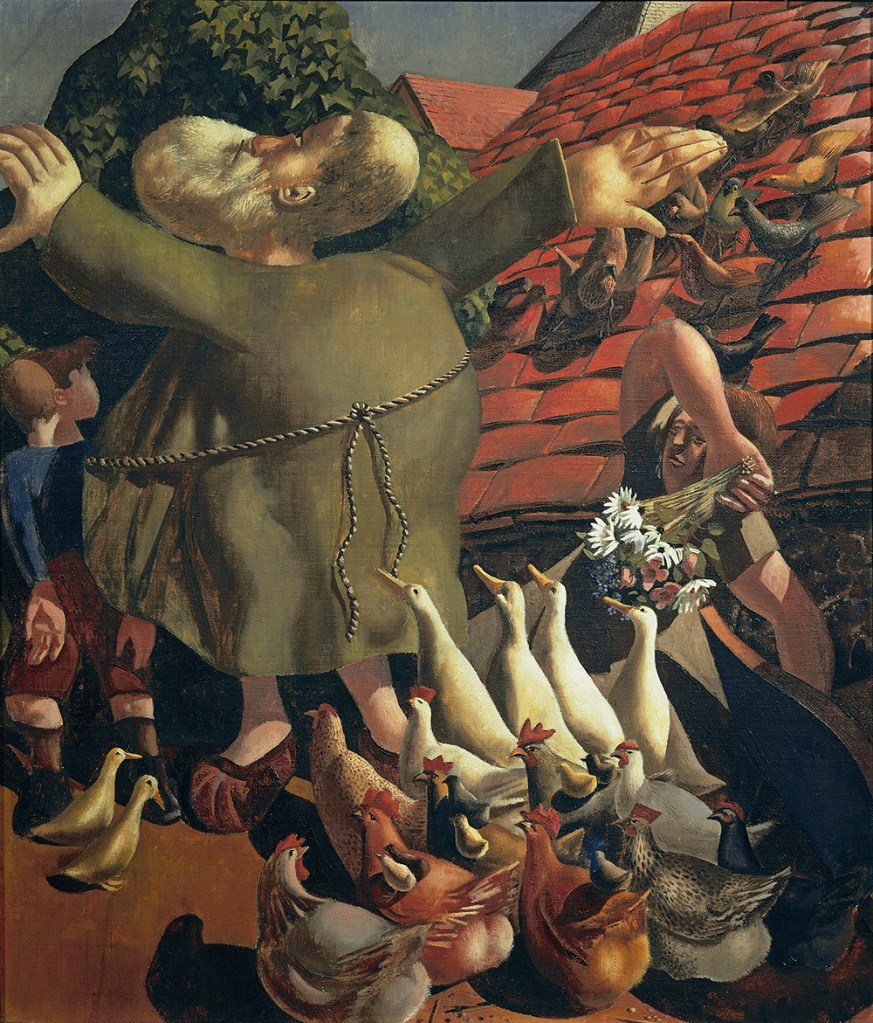
Thomas of Celano, who knew Francis, described him as of medium height with skinny legs, small feet and sticking-out ears – prominent in an early posthumous portrait on loan from the Sacro Convento. Francis’s cult inspired a flurry of image-making: as many as 20,000 paintings of him were produced in the century after his death. The 28 most famous are unable to travel, having been frescoed on to the walls of the Upper Church of the Basilica in Assisi by Giotto and collaborators in 1290s. But Sassetta’s eight dramatic ‘Scenes from the Life of Saint Francis’ (1437-44) illustrate several of the same episodes, sticking close to St Bonaventure’s authorised biography. Caravaggio takes more liberties with his ‘Saint Francis in Ecstasy’ (c.1595), visualising the stigmatised saint fainting into the arms of a handsome, half-naked angel. El Greco, whose workshop specialised in paintings of the subject, dispenses with props and homes in on the face and hands of ‘Saint Francis receiving the Stigmata’ (1590-95), while Luc-Olivier Merson constructs an elaborate set for his theatrical vision of a reformed ‘Wolf of Gubbio’ (1877), complete with halo, meekly accepting a scrap of meat from a nervous butcher outside a shop hung with an array of mouth-watering carcasses. Stanley Spencer in his ‘Saint Francis and the Birds’ (1935) pictures a roly-poly saint in dressing gown and slippers with an audience of farmyard geese and chickens, in a proper spirit of Franciscan humility if not Giottesque elegance. The Royal Academy didn’t see it that way; the hanging committee rejected the picture and Spencer resigned in protest.
As many as 20,000 paintings of Francis were produced in the century after his death
Among the modern tributes in the exhibition Francis would, I’m sure, have appreciated the sackcloth ‘Sacco’ (1953) by arte povera pioneer Alberto Burri from neighbouring Citta di Castello, displayed alongside the patched habit from Santa Croce. What he would have thought of Antony Gormley’s ‘Untitled (for Francis)’ (1985), one of the sculptor’s ubiquitous body casts with hands extended in prayer, is less certain. In Gormley’s perfectly proportioned ‘Vitruvian Man’ body one looks in vain for the skinny legs and sticking-out ears, while his idea of turning the stigmata into eyeholes feels invasive of the privacy of a saint who kept his wounds secret from all but two trusted brothers. Richard Long strikes a more authentic note with ‘A Walk for Saint Francis’ (2022), a record of his week-long wanderings on Mount Subasio last May noting chirrups, wingbeats, cold wind, distant thunder and the sound of bells rising from 1,000 metres below.
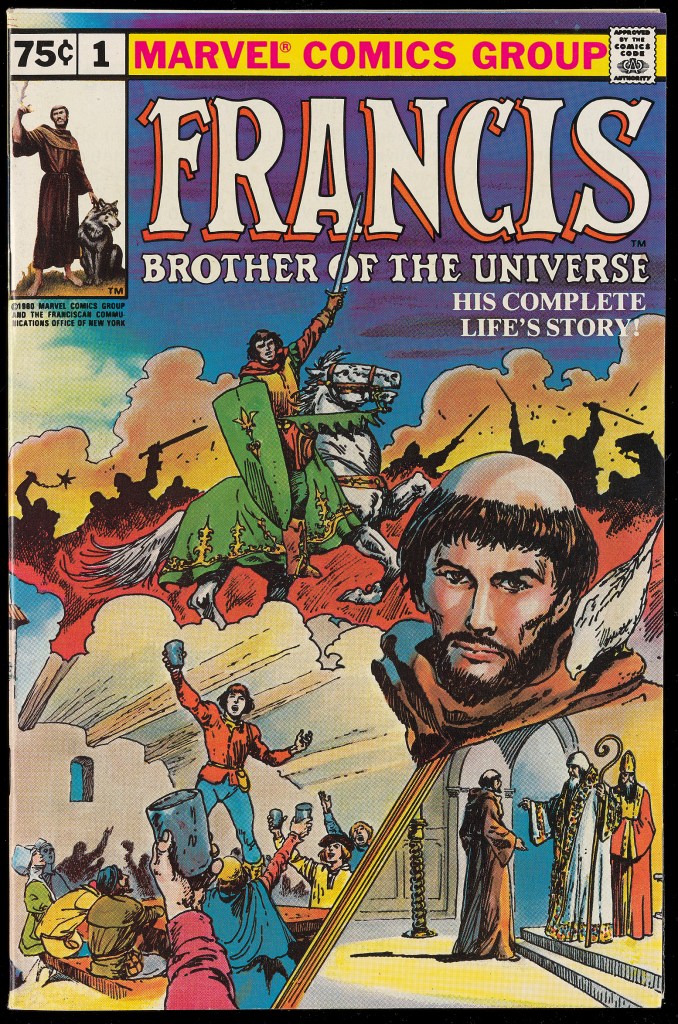
‘We cannot every day make up new things,’ complained a frustrated Thomas of Celano after churning out a third and final volume on Francis’s miracles. ‘We cannot change a square into a circle, we cannot tailor to the differences of times and desires what has been handed on to us in this one man.’ Oh, but we can. Biographers may have squeezed the historical sources dry, but artists have not run out of inspiration.
Saint Francis of Assisi is at the National Gallery until 30 July.

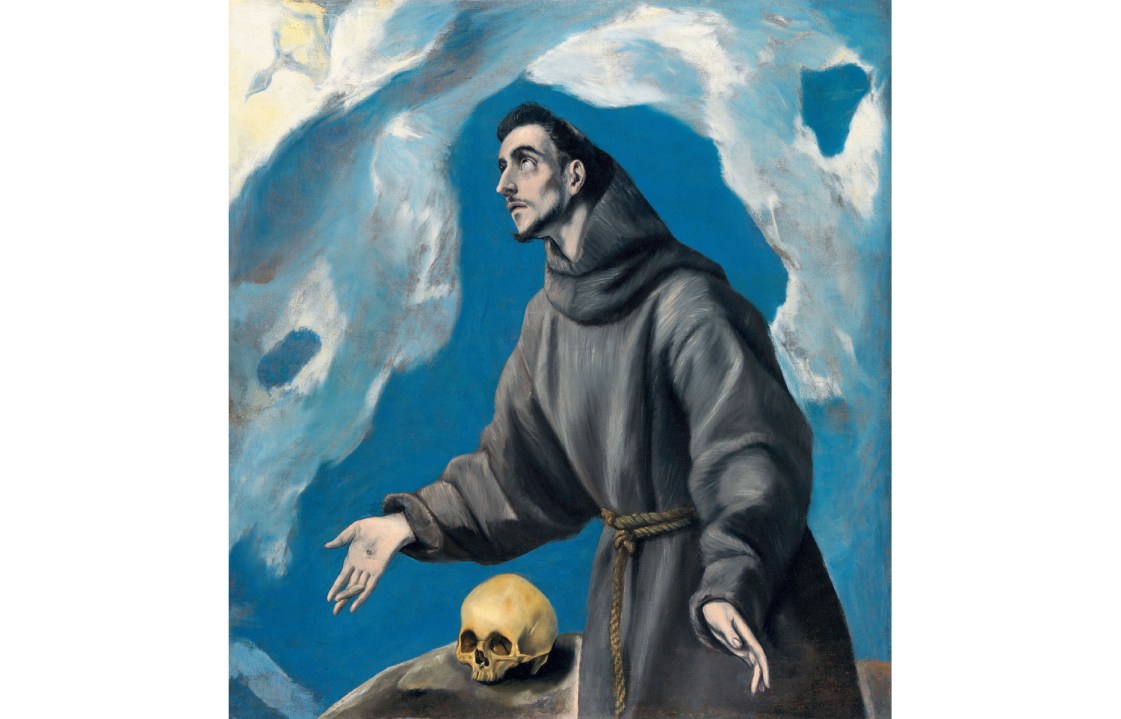
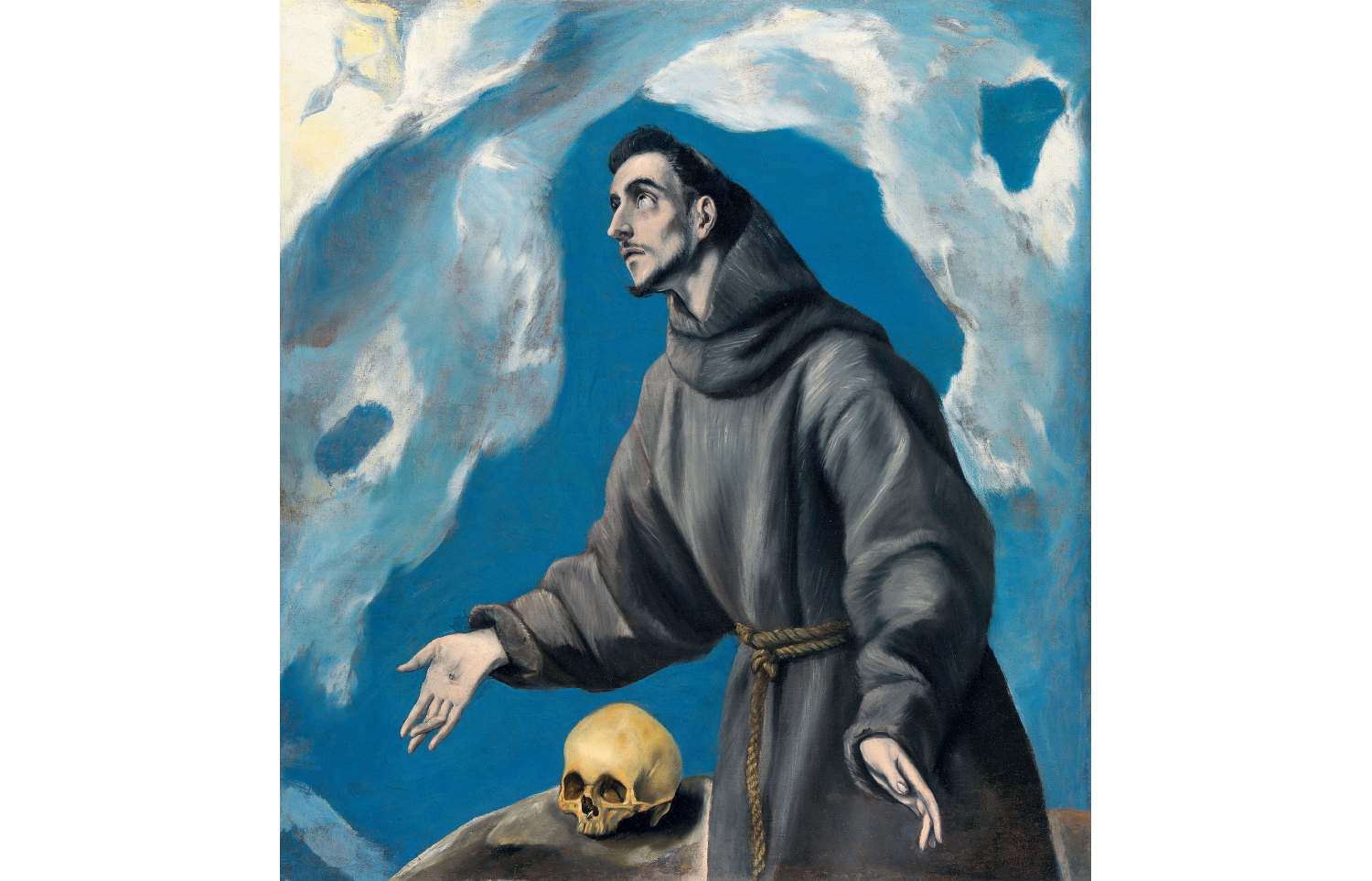




Comments